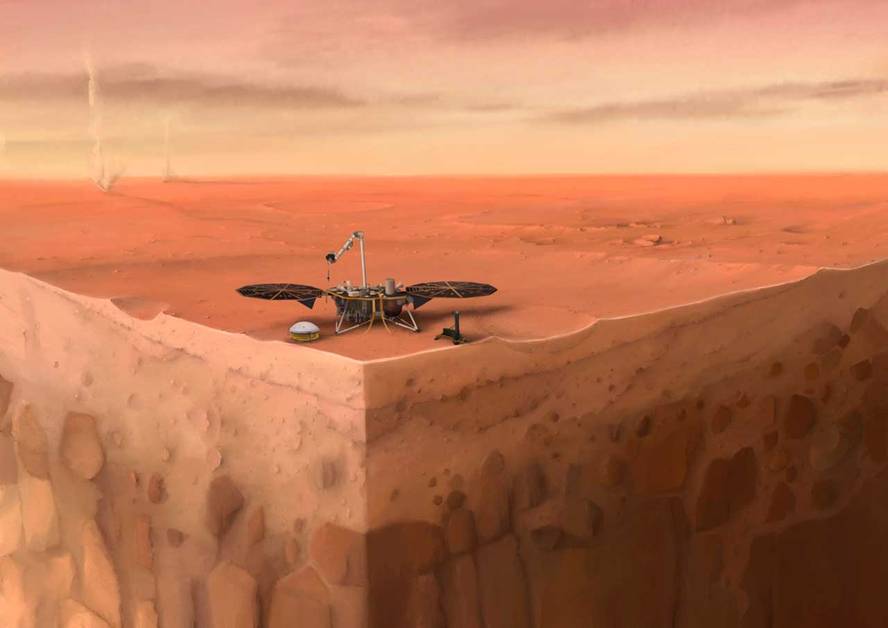Have detected earthquakes on Mars

Since the InSight probe reached the surface of Mars, NASA researchers have identified 174 seismic episodes, some of them level 3-4 earthquakes. The probe arrived on November 26, 2018 to a small crater of the Elysium Planitia area, from which it has detected the geological activity of the red planet.
So far it has been very doubtful that Mars could have seismic activity. It is clear that it had it at a time when the planet meets the most voluminous volcanoes of the Solar System, with a height of 20 km, twice as high as Everest. But they believed that the small size of Mars has long cooled faster than Earth and its geological activity has disappeared. Now, new InSight data has highlighted current earthquakes of tectonic origin. Therefore, it has been considered that Mars is psychologically active.
InSight has also analyzed the planet's atmosphere, winds and magnetism, and the journal Nature Geoscience has published all the results in five articles. For example, they have clarified that the magnetic field of Mars is ten times greater than previously thought. According to the researchers, fossil magnetic fields would be the ones that have been detected now, since Mars has had in the past a much larger magnetic field. But it is important for NASA to quantify this magnetic field, as it could be protected from solar wind and high energy particles. The goal is to identify in which area of Mars the largest magnetic field occurs when astronauts begin to ship.
In 2020 several missions will be launched to Mars. More information: Mars 2020.





